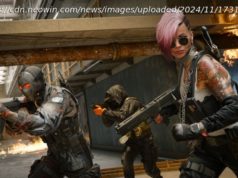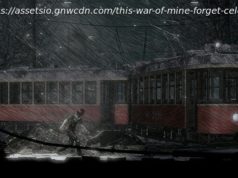One of the executive producers on Just Cause 4 talks about how an evolving feedback process has led to weather systems and a new focus on narrative design.
Last week, Avalanche executive producer Adam Davidson talked to Gamasutra about what’s changed in the world of game development now that one of the developer’s biggest games is popular among livestreamers.
But during that conversation, another recurring pattern also emerged; that Avalanche is attempting to structure its development of Just Cause 4 around not just technical innovations, but also building improved processes that can help its developers interpret player feedback.
This seems like a big deal for Avalanche, as the studio is trying to change the way it makes games in order to better focus on interpreting (and acting on!) player feedback. According to Davidson, this has led to meaningful changes to Avalanche’s design methodologies and team structure.
While other sandbox games might use a sequel as an opportunity to build holistic new systems that are only thematically connected to the original, it’s worthwhile to pay attention on how this approach is helping Avalanche double down on what works, and re-think what doesn’t in Just Cause 4.
First, it’s worth clarifying how Avalanche is taking in player feedback. According to Davidson, as Just Cause 3 launched in 2015, Avalanche actively monitored not only normal reviews and press impressions, but what YouTubers and streamers were doing in front of live audiences.
“There is some degree of subjectivity to [the process,] but we tried to weight versus severity,” he says. “If someone was complaining about variety, like the world was too repetitive, how angry did they seem about that in their review or comment? We could weight versus that. When we put all the data out, you could see very clearly with very clear bars of saying ‘there’s a lot of angst about this [feature,] a lot of joy about this,’ and it helped us kind of pare that feedback down.”
From there, Davidson says it just becomes a process of elimination to see what the team can actually work with, which led to two top-level decisions during the pre-production of Just Cause 4: a weather system that could build on the physics of the Apex engine, and a dedicated narrative design team to improve the main game.
With the introduction of a weather system, Davidson jokes that Avalanche’s programmers and artists have now become junior meteorologists, because they’ve spent so much time studying cloud movement as they try to create game systems that create weather patterns designed to interact with the heightened game physics.
“All day, every day, it’s a weather club around the office,” he chuckles. “There’s a bunch of photographers and videographer that make these incredible videos of storms…and as those get released on Vimeo or something, they immediately start circulating around the office.”
What’s also notable about this weather system is that, according to Davidson, it’s a physics-driven feature that players aren’t meant to have the same level of control of as they do with explosions and propulsions. During a (rather over-the-top) game demo, the Avalanche team showed off a mission in which protagonist Rico Rodriguez is attempting to destroy a series of wind cannons that are holding off an advancing tornado.
It’s a rare mechanic that allows the player to directly interact with how the game’s weather behaves, and Davidson says it’s the exception rather than the rule of weather design.
“It’s part of the challenge thing with Rico. Rico can decimate entire armies on his own but what’s something that gives him a challenge and is formidable to him?” he asks. “There are things within the story that allow you to mess with the weather, but mostly these systems are in the world, acting the way they’re going to act, and you deal with them more than they deal with you.”
In a series where players are used to being imbibed with total control over physics and the game environment, it’s an interesting way of layering challenge and interactivity to create broader variety.
One unusual decision made in response to player feedback was the decision by Avalanche to staff out a narrative design team to build Just Cause 4’s main story quest.
That decision isn’t necessarily unusual because Just Cause’s characters aren’t deserving of a proper narrative, but rather because this seemed to be an E3 where, if your game was popular for non-storytelling mechanics, you dumped the narrative and focused on those mechanics.
But as Davidson says, the Just Cause team now has a proper narrative director in Omar Shakir, who was on hand at E3 leading demos for the game. “That was one of the things that when we saw that feedback, [we said] ‘we were off the mark, we need to take that next step forward.'”
Davidson described an attempt to package Just Cause as a “premier franchise,” but between the lines it seemed as though this narrative push came from player feedback looking for more context in the games’ proper mission design, to broaden the game’s appeal beyond just “giffable moments.” He made a comparison to the game’s art style, which he argued could be “cartoony,” but “because it looks sorta real,” he says, “that has more weight, that has more impact, more spectacle and impression.”
It suggests a model for sandbox games that evolves alongside improving technology, not just by going online or adding loot systems, but using the logic of a powerful physics engine to sculpt unique moments that will play well when a popular streamer puts them on Twitch or YouTube. And hopefully, using the work of a narrative team to make those unique moments stick with players.
Lastly, Davidson touched on one design change that seemed to come from within the team. As Shakir explained in a gameplay demo, progression in Just Cause 4 isn’t just indicated by unlocked areas, and new items in your inventory, but also a visual warfront that moves and reacts to changed variables as a result of story missions.
Onscreen, this system looks like a sea of smoke and missile trails amidst the green jungle of Just Cause 4’s fictional nation of Solis. According to Shakir, these locations are meant to draw the player’s attention and lead them to vital missions, and they change and flow based on what the player’s done so far in the game.






